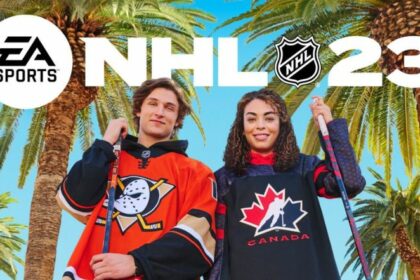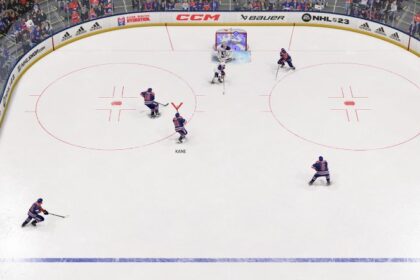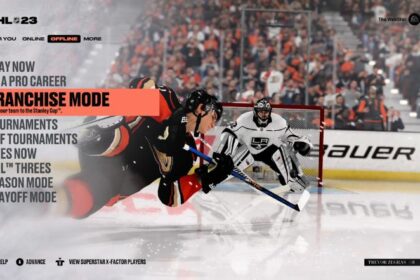NHL 23 Be A Pro (BAP) mode is packed with features, even though these features are pretty much the same as what we got with the previous installment of the game.
One such feature is the inclusion of the “Likeability” scores that serve as a form of measurement of the perception that your player has in the game.
There are three likeability measurements in this game mode; Teammate Likeability, Management Likeability, and Brand Likeability.
In this guide, I will briefly discuss why this feature matters, and how you can increase likeability in NHL 23 Be A Pro mode if required.
Why is Likeability Important?
Each type of likeability is potentially important to your success in NHL 23 Be A Pro mode for different reasons.
Teammate Likeability
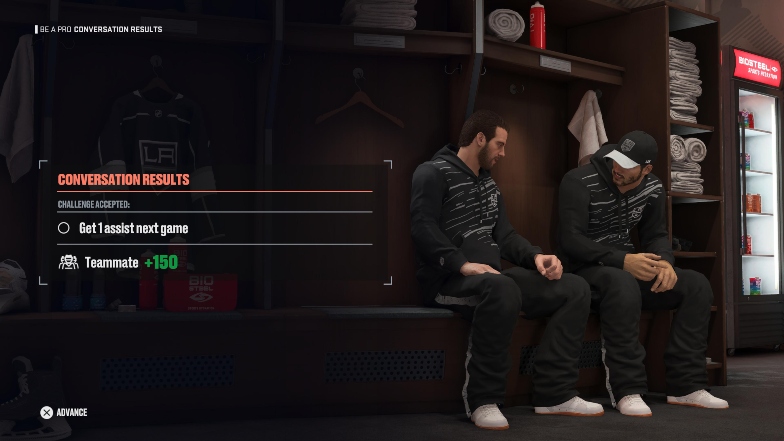
Teammate Likeability indicates how well you get on with your teammates. According to its description, a low score in this area means that your teammates have a poor perception of you, and this may show in the way they relate with you on and off the ice.
A tangible side effect of a low Teammate likeability score is that you’re less likely to receive passes during games unless you’re in an excellent position in space to receive the pass.
I’d like to clarify that this is the theory presented by EA, but I was not able to replicate it myself to confirm. In my experience, my Teammate Likeability score did not make a significant difference to the frequency of receiving passes from teammates during games.
However, if you hope to captain the team in the future, it is a good idea to maintain a good score in this area. Also, some storyline rewards in the game require that you achieve a certain minimum Teammate Likeability score.
Management Likeability
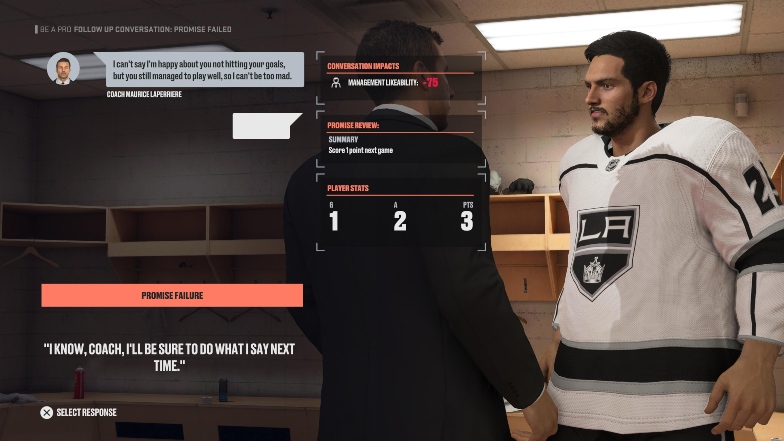
The description for this is pretty clear from its name. Management Likeability indicates the perception of the management toward you as a player in NHL 23 BAP mode.
Management Likeability also has a stronger impact on your in-game experience because it directly affects your line score and perceived importance to the team.
If you hope to be part of the 1st line in the roster, then you want to make sure that you stay in the good books of the coach and the rest of the management.
Brand Likeability
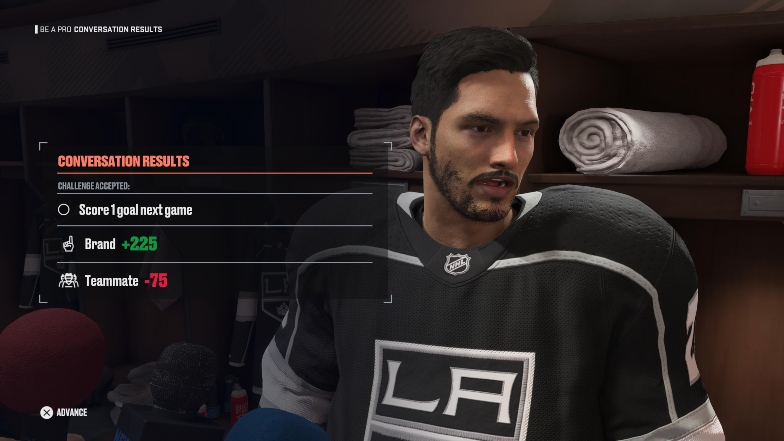
Brand Likeability is also pretty important in NHL 23. From your responses in conversations and interviews to your performances on the ice, there are several ways by which this score can decrease or increase.
However, the most important reason why you may need to keep your Brand Likeability score at a high level is the fact that it offers the most rewards when it comes to the progress of your player.
A high score in this area generally makes you more “marketable”, which in turn translates into more followers. As the numbers for followership rise, you can buy certain perks with your salary and use them to improve your player’s abilities.
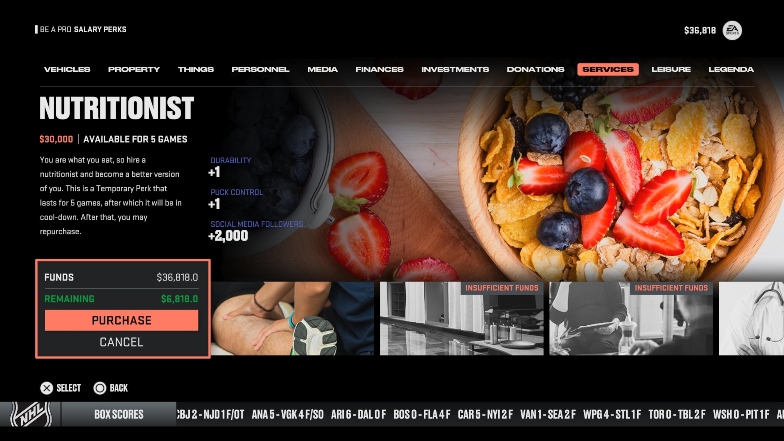
In the picture attached above, you’ll notice that paying for the services of a nutritionist in the “Salary Perks” section gives my player a 5-game boost for durability and puck control.
Usually, the perks that offer the most impact are more expensive, but they also usually last for longer and some even provide permanent attribute boosts.
A high Brand Likeability score also puts you in a better position for excellent endorsement deals, again because of “marketability”.
How to Increase Teammate Likeability

Teammate Likeability has the least impact of the three, but it is also the easiest to boost.
Over the course of the game, your player will be involved in several conversations with teammates, the coach, the media, and even the GM. Every time you choose the “Team” response, your Teammate Likeability score will get a boost.
However, it gets tricky because this score often directly interferes with the Brand Likeability score. If you choose the “Star” response, your Teammate Likeability score will suffer a hit.
If you’re very invested in getting the score to the maximum possible level, it might be worth holding off on Star responses until you achieve that feat.
On another note, requesting a trade in NHL 23 will also have a negative impact on your Teammate Likeability score.

To solve the problem of interference with your Brand Likeability score, you can make up for some lost points by choosing the team option when the coach gives you challenge options during games.
In those cases, choosing the “Team” challenge will not affect your BL score. The rewards for completing Team-associated challenges and storylines are not as tasty as the alternative, but they’re decent.
How to Increase Management Likeability
As was the case with my Teammate Likeability score, my Management Likeability score also suffered a hit when I got drafted as the first pick in Be A Pro mode and asked to be traded. It was a 300-point penalty, to be exact.
Increasing your ML score is crucial for staying in the first line, which is where you want to be to get a lot of action and ice time.
Your responses in conversations are also important here, as well as completing challenges (before, during, and after games) given to you by the coach. Be sure to pay attention to the coach’s feedback too, especially when you’re deemed to have underperformed.
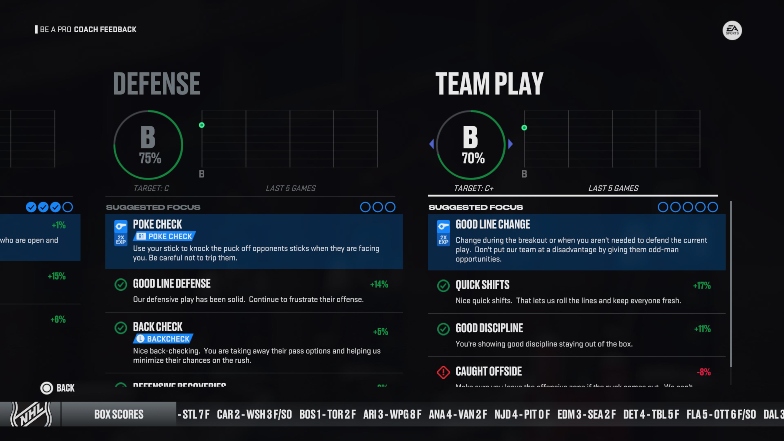
Even when the coach is not directly involved, your responses in other conversations can affect your ML score.
For instance, there was a point when I was invited to play in a charity match and I declined because I wanted to focus on the upcoming games. I noticed that the response triggered a ML score boost.
You also accrue Management Likeability points when you choose “Star” or “Team” responses in conversations, so this is a metric that should see natural increases that don’t require extra effort on your part as you play through the game.
How to Increase Brand Likeability
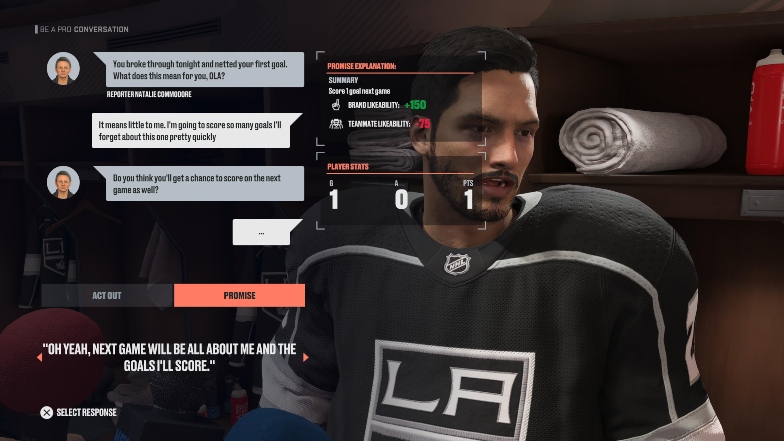
In contrast to the method for increasing TL points, choosing “Star” responses in conversations drives your Brand Likeability numbers up. Basically, the metric rewards arrogance because it is marketable.
It’s not far from the truth in real life as we’ve seen arrogant players get a lot of media attention because fans like to read about them.
As I mentioned earlier on, amassing followers exposes your player to better endorsement deals, and completing “Star” goals and challenges set by the media or your coach also boosts your score and provides other rewards that you can use to improve your player.
Final Words
From my experience so far with NHL 23, I would suggest focusing on improving your Brand Likeability score over Teammate Likeability in the beginning, due to the potential rewards from the former and the apparent lack of real impact of the latter.
That way, when you’ve attained the maximum score, you can afford to take hits on the BL score in favor of Teammate Likeability conversation responses and challenges.
The tips that I’ve discussed should make it fairly easy to achieve high scores in all categories within a season. It’s pretty hard to remain invested in the conversations that take place after that, but you can cross that bridge when you get there.
Best of luck!

